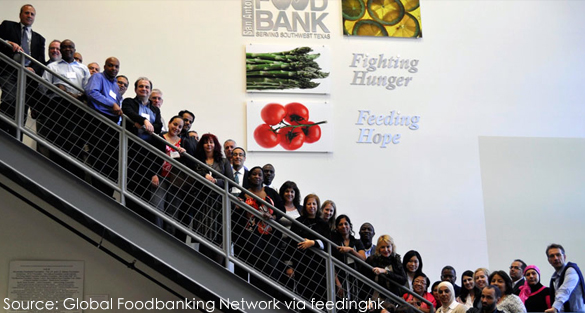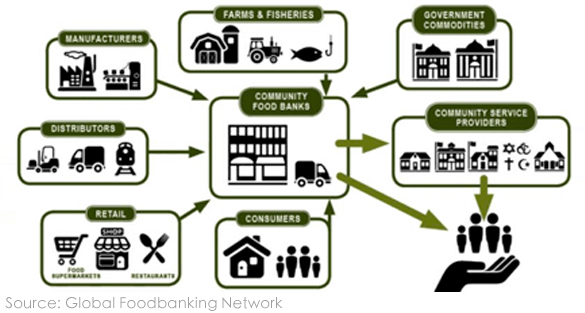What Is a Food Bank?
A food bank is a charitable organisation that collects, sorts, stores and distributes donated food within a community. Traditionally, a food bank does not distribute food directly to those in need. Instead, it serves a network of local charities, who in turn feed the hungry.
Food banking is about ensuring good food does not go to waste but is instead safely and efficiently redistributed to those in need. So, instead of buying food, a food bank will work closely with the local food industry to “rescue” excess food and ensure it is not unnecessarily sent to landfill. Like any for-profit food organisation, food banks take great care to ensure they only distribute food of the highest standard.
Food banking is also about working efficiently at scale. In the normal course of business farmers, manufacturers, distributors and retailers produce or obtain excess food that they cannot sell. Often this food is in large volumes and if it is to be rescued, it must be done so quickly.
Most charities do not have the transportation, space or manpower to collect, sort and store a pallet or truckload of donated food but a food bank is specifically set up to do just this. It is able to “bank” large quantities of excess food in a centralised warehouse, and with help from volunteers, sort, pack and re-distribute it through a network of partner charities.
With thousands of food banks on every continent, there are many different models but these are some of the key elements shared by food banks around the world.
The World’s First Food Bank
St. Mary’s is the world’s first food bank, founded by Mr. John van Hengel in Arizona, the United States at 1967.
How Food Banking Works
Food banking systems capture surplus food and deliver it to the people who need it most, and engage all sectors of society (governments, business, and civil society) in the process.
Food banks acquire donated food, much of which would otherwise be wasted, from farms, manufacturers, distributors, retail stores, consumers, and other sources, and make it available to those in need through a network of community agencies. These agencies include school feeding programs, food pantries, soup kitchens, AIDS and TB hospices, substance abuse clinics, after-school programs, and other nonprofit programs that provide food to the hungry.
Source: The Global FoodBanking Network, St. Mary’s Food Bank Alliance, Feeding HK











